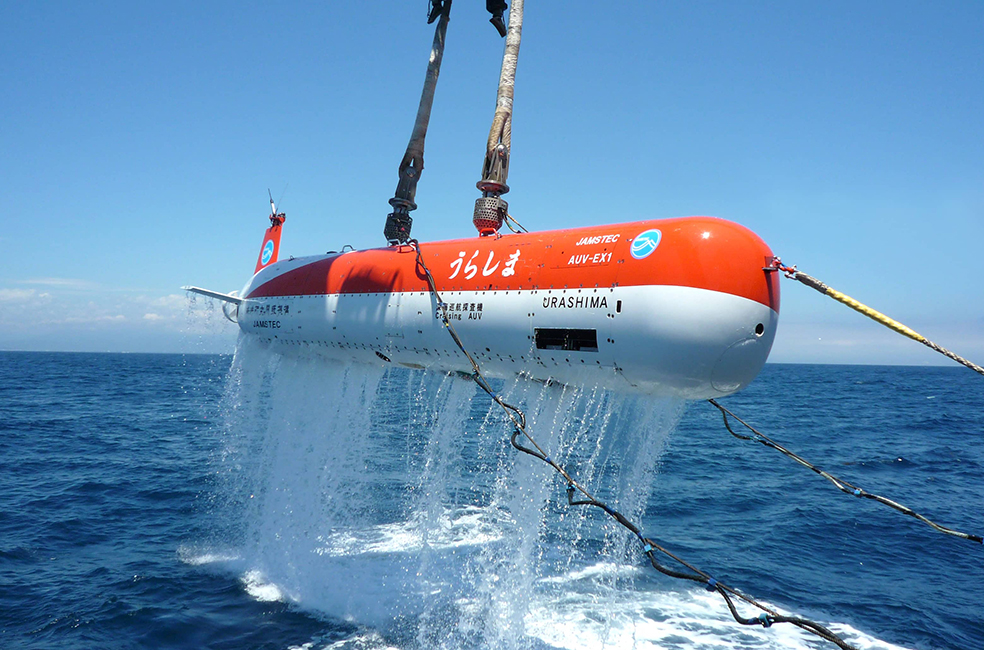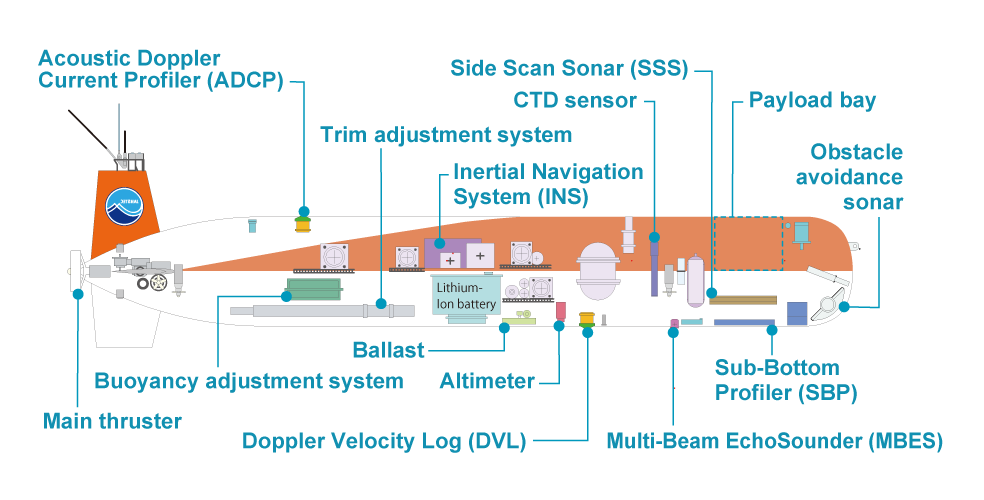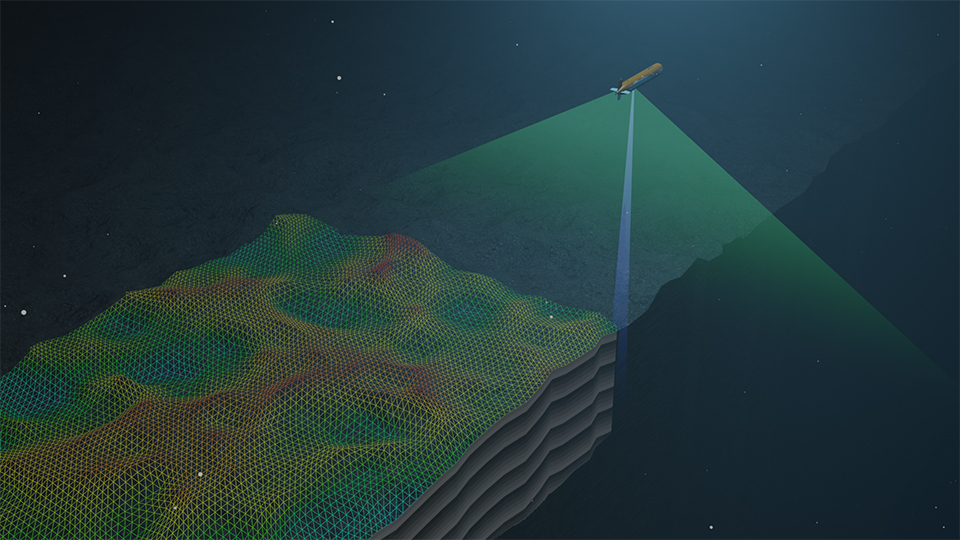AUV URASHIMA 8000
A Deep-Sea Explorer and the World's Largest AUV
Deep Sea Cruising AUV URASHIMA 8000 has been under development since 1998, and after several times modifications and system replacements, it is now used for deep-sea research. Observations are carried out from near the seabed, which enables the acquisition of seabed topography and sub-seabed structure data at a higher resolution than ship-based surveys.
In 2022, a major upgrade project was launched to extend URASHIMA ’s operational depth to 8000 m. In 2025, AUV URASHIMA 8000 successfully completed a test dive in ultra-deep water at a depth of 8000 m. It is expected to be used in the near future for detailed surveys in trench areas including seismic research.

Main equipment

Turning the Ocean Floor into Hi-Res Bathymetric Maps
URASHIMA 8000 uses high-frequency sound waves (400 kHz) close to the seafloor while exploring the seafloor bathymetry, whereas the mother ship explores from the sea surface.

Large science payload compartment
URASHIMA 8000 ’s survey instruments payload compartment is big enough to hold four adults. Large survey instruments such as water samplers, magnetometers, and gravimeters can be mounted.

